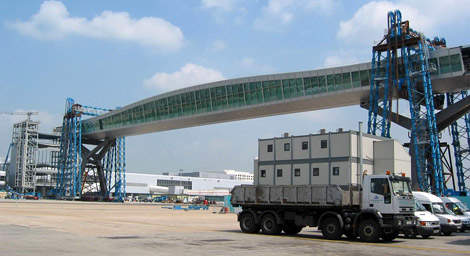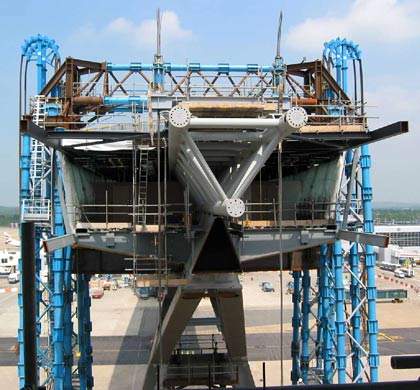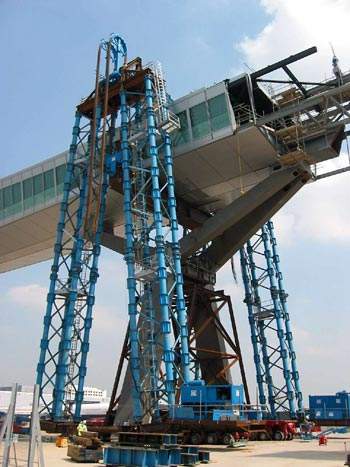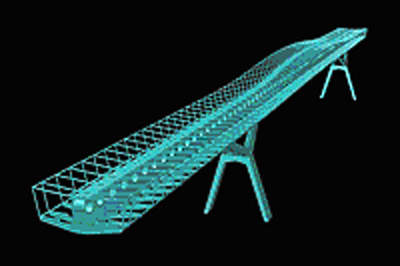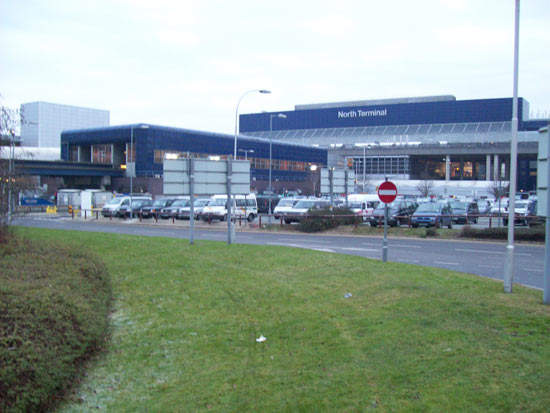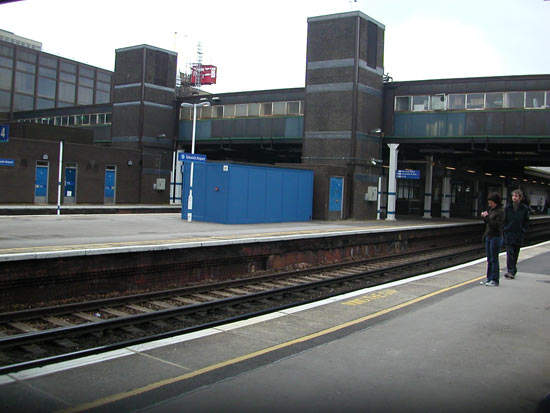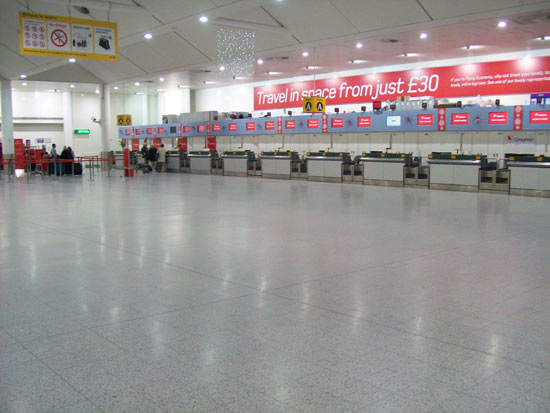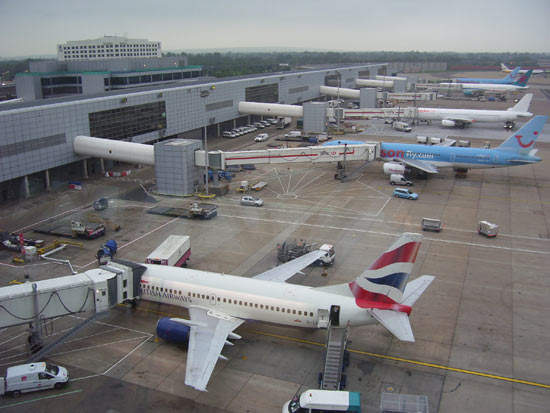Gatwick was formally developed as a major airport in 1958 following an investment of £7.8m, before which it was only used by a small number of commercial aircraft. Gatwick Airport is the second-largest airport serving London and the south-east of England and the second-busiest airport in the UK after Heathrow.
The airport also has the distinction of being the busiest single-runway airport and ninth-busiest airport in the world in terms of passengers each year (handling nearly 34.2 million in 2008).
The airport witnessed passenger traffic of 31.37 million and recorded 240,500 aircraft movements in 2010. It also handled 102,454t of cargo in the same year.
The airport is located between Horley in Surrey and Crawley in West Sussex, about midway between London and Brighton. The runway at Gatwick is 3,316m long and 45m wide.
BAA agreed to sell its stake in the airport, the news of which was announced on 21 October 2009, and made the decision to reduce its debts. The deal was worth £1.5bn, of which £55m was conditional.
The new owner of the airport is Global Infrastructure Partners (GIP). It gained ownership on 4 December 2009. The operator of the airport is Gatwick Airport Limited (Gatwick), licensed by the Civil Aviation Authority.
Many airlines use Gatwick for flights to and from the US because of restrictions on transatlantic operations from Heathrow. The airport is a secondary hub for British Airways and Virgin Atlantic.
Gatwick airport expansion
The last major expansion at Gatwick took place in 1979. An agreement was put into place at the time with the local authorities to not expand the airport before 2019.
According to the agreement between airport authorities and West Sussex County Council, a new second runway cannot be built before 2019. There have been recent proposals, however, to build a new runway because of increases in air traffic.
In 2008 BAA spent about £100m on the airport’s development. The department lounge in the south terminal was renovated and security facilities and car parking facilities were improved as a part of the development.
The risk of increased noise pollution, traffic pollution and water shortages were concerns raised against expansion. However, the airport authorities anticipate passenger numbers will grow to 40 million over the next few years. The airport’s capital investment programme, therefore, has allocated £1bn for future developments at the airport from 2008 to 2013 to improve facilities and enhance capacity.
The extension of the airport’s north terminal and the construction of a multistorey car park are planned. Extra baggage reclaim halls and new check-in facilities will also be provided for the north terminal, along with parking places for 900 more cars.
Other projects in the £1bn investment programme include the renovation of the south terminal, which includes the construction of a new forecourt, allowing the airport to handle new aircraft types. All these developments are planned to be completed by 2013.
In July 2010 an inter-terminal shuttle replaced the old transit system connecting the terminals at Gatwick. The new carriages (six new cars weighing around 14t) have been installed on the tracks. The development, which cost £44m, was part ofthe £1bn ($1.6bn) investment programme.
In August 2011, VolkerFitzpatrick signed a contract with Gatwick Airport to resurface a 3.3km main runway under the £1bn programme. The contract work includes resurfacing an area of 400,000m² by using 65,000t of asphalt, supplanting 1900 runway and taxi lights. It also involves meliorating the drainage system and superceding airfield lighting.
Work on the contract is expected to begin in March 2012.
Gatwick airport development master plan
In spring 2005, Gatwick issued an outline of the designated master plan. The plan was updated and another interim version was released in October 2006. A final master plan is yet to be released after full review but should be finished by the end of 2011. The master plan is aimed at scaling growth in activity until 2015. The second purpose of the master plan is to draft preparations for the airport between 2016 and 2030.
Airport terminal features
The airport has two terminals, designated as north and south. South Terminal opened in 1958 and construction started on the North Terminal in 1983. North Terminal was opened by HRH Queen Elizabeth in 1988 and expanded in 1991.
South Terminal is spread over 120,000m², of which 14,768m² is dedicated to retail facilities. North Terminal is spread over 75,000m², of which retail facilities constitute 12,530m². North Terminal consists of an international departure lounge spread over two floors.
It also includes arrivals and check-in areas. The avenue consists of shops, food and drink outlets and other amenities. The arrivals area consists of a baggage reclaim area, airline desks, cash machines and shops.
Both South Terminal and North Terminal are equipped with business lounges, meeting rooms, shops, left baggage and lost property facilities, a currency exchange and duty-free shops.
Gatwick Airport Railway Station, situated next to South Terminal, provides links to Brighton, London Victoria and London Bridge stations. The two terminals have short-term car-parking facilities. Long-term parking is also available.
Pier 6 development plans
The Pier 6 project was part of a new £850m capital investment programme that BAA started at Gatwick Airport to increase capacity and improve customer services over the next ten years. The project will support the airport’s planned growth, accepting up to 45 million passengers a year.
Pier 6 is an 11-pier aircraft stand attached to North Terminal by a state-of-the-art bridge. The development required an investment of £110m and was started in June 2003. The air bridge was constructed off site and moved into position in May 2004, providing a new landmark for the airport. The entire Pier 6 development, including aircraft piers and retail concessions, opened in May 2005.
At 197m, the new Gatwick air bridge is the largest passenger bridge in the world to span a taxiway.
The fully enclosed bridge design is based on the human spine and was designed using Oasys GSA software by Arup and WilkinsonEyre Architects.
The bridge weighs 2,660t and is 32m high, with maximum span of 128m and 2,260m² of external glazing.
The floor width of the mid-span is 11.5m.
The concept architect was WilkinsonEyre, the bridge engineer was Arup, the principal contractor and construction manager was Mace and concrete work was carried out by Laing O’Rourke. Fit-out of the bridge and Pier 6 was carried out by Warings and the east and west communications rooms of the bridge were installed and network cabled by Pinacl Solutions.
Black and Veatch and TPS Consult were technical consultants for the project. Dorman Long was the heavy lifting contractor.

